Affiliate links on Android Authority may earn us a commission. Learn more.
Air Actions on the Galaxy Note 10: What are they and how do they work?
October 13, 2019
Samsung Air Actions lets you use your S-Pen as a wand in apps and control what they do with a swipe. This is a guide on how to configure and use this new feature. Or, if you’d rather check out the official tutorial, Samsung also has a tutorial available online.
Samsung Air Actions vs Air Command
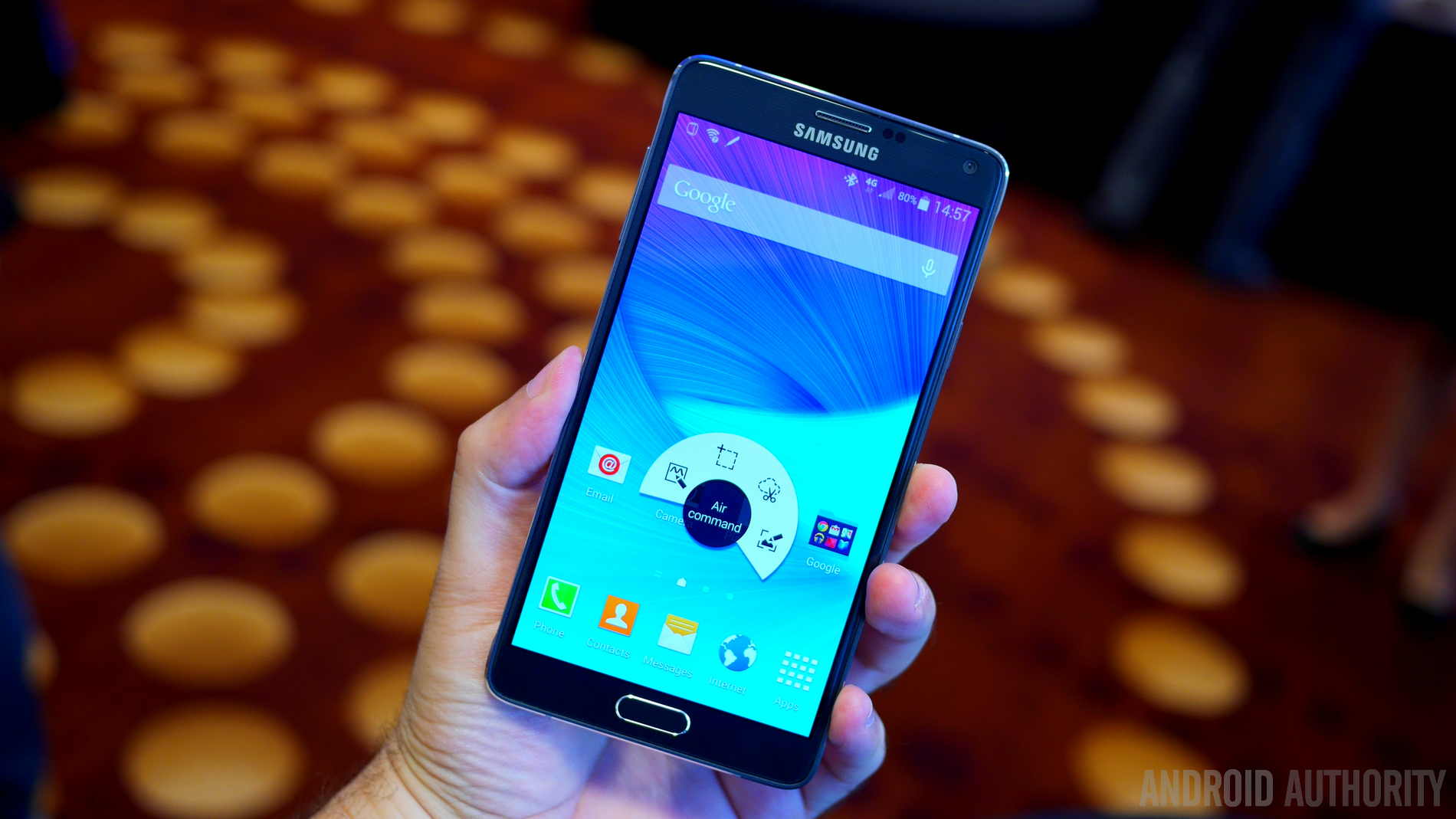
Air Command debuted on the Samsung Galaxy Note 3 and it’s the name Samsung gave to the menu that shows up when you pop the S-Pen out of the phone. It has received iterative updates over the years, but has remained an essential part of the S-Pen experience. It is still a part of the Galaxy Note 10 experience as well.
Air Actions, by contrast, is a new feature on the Samsung Galaxy Note 10 and Galaxy Note 10 Plus. It lets you use your S-Pen as a sort of remote to navigate apps. You simply press the button and wave it around like a wand to do various things. The feature uses the a six-axis motion controller in the S-Pen, a new feature in the Galaxy Note 10 lineup.
We felt the need to differentiate the two because the names are so similar and easily mistakable. Plus, Samsung Air Actions are often mislabeled as “air commands” or “air gestures,” so we wanted to dispel any potential confusion. Below, we’ll show you how Air Actions work, how to access them, and how to use them in apps.
How to activate Air Actions
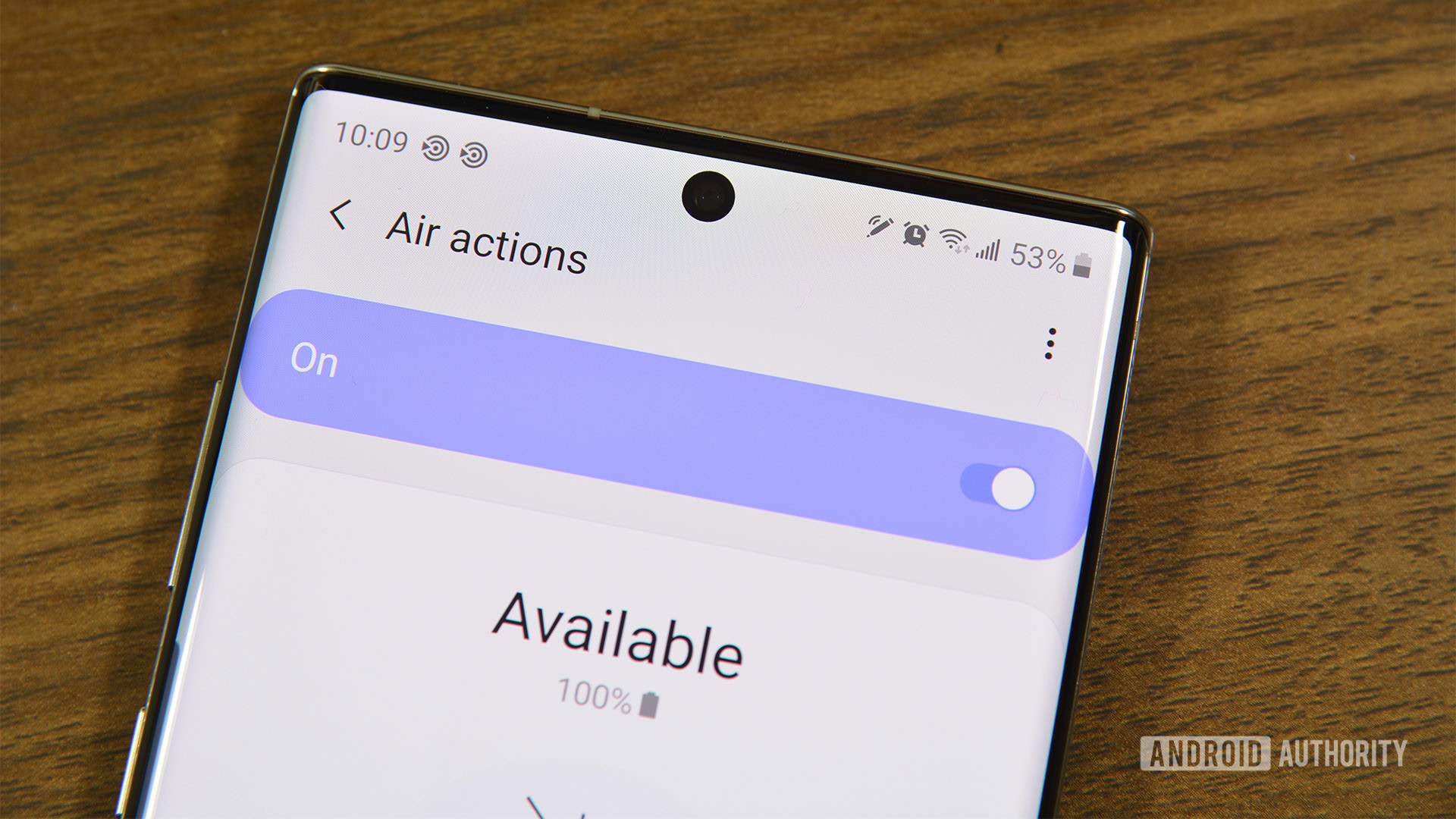
Air Actions are active by default without any input needed from you. However, you can enable and disable the feature in the Settings menu. Simply navigate to Settings, then Advanced Features, and then S-Pen. Air Actions should be the top option from there.
The feature auto-activates in the appropriate apps. The S-Pen bubble icon along the right edge is gray and transparent when Air Actions isn’t available, and it changes to purple when the functionality is available. It will change colors automatically so there is nothing you need to do in order to turn it on aside from opening a compatible app.
How to use Air Actions
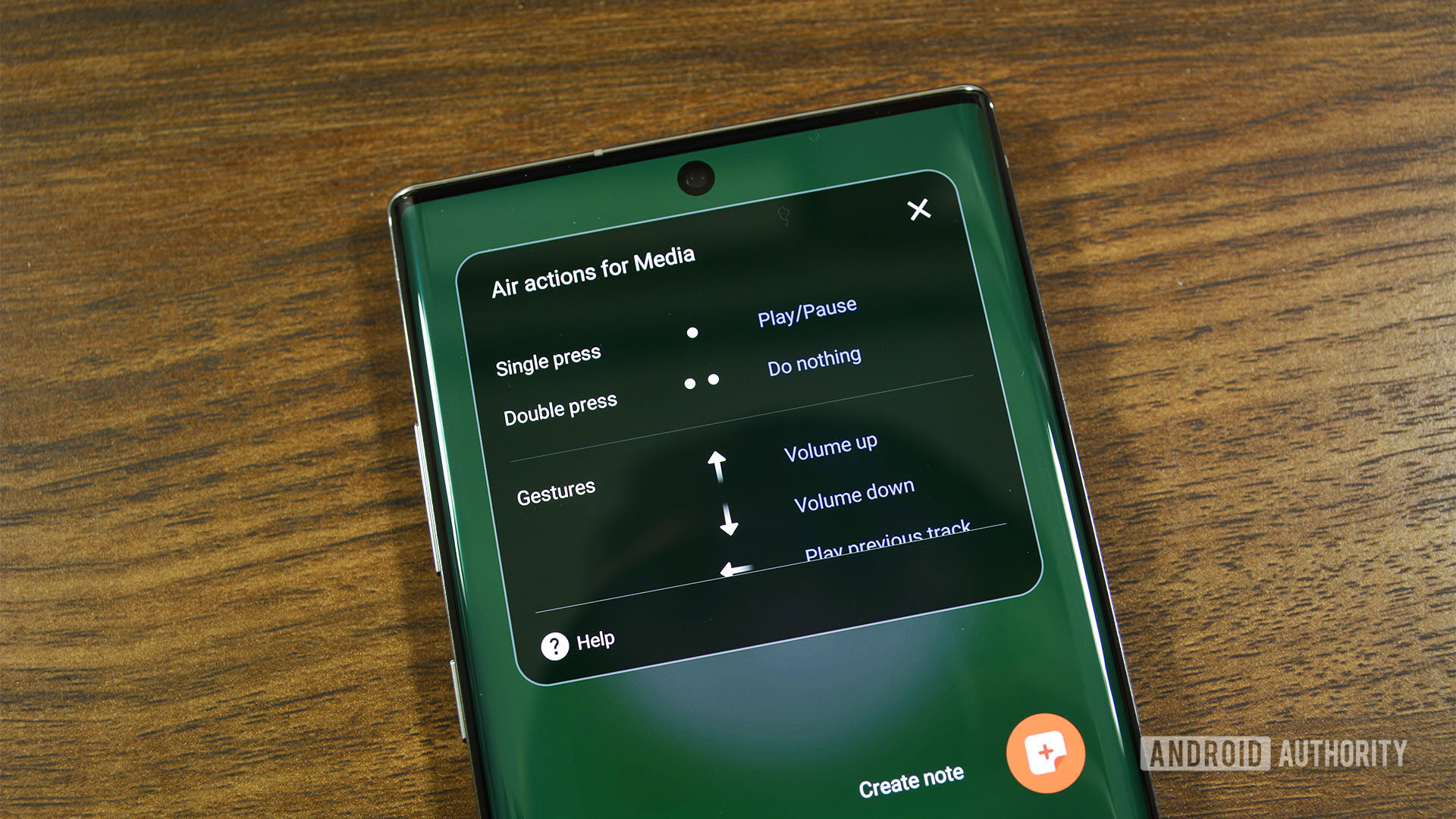
The basic use of Air Actions is simple:
- Press and hold the S-Pen button.
- Quickly perform the gesture.
- Quickly let go of the S-Pen button.
You should attempt to perform all three steps in one smooth motion, otherwise the gesture may not work. It takes a few tries to get the hang of it, so don’t get too discouraged if you can’t get it right every time right off of the bat.
A total of six gestures can be performed in any given app. They include up, down, left, and right gestures along with the clockwise and counterclockwise spin gestures. These gestures do different things in different apps.
Clockwise and counterclockwise gestures aren't available in media apps like they are in natively compatible apps like Samsung's Camera app.
To see the control schemes of any given app, simply tap the floating Air Actions icon on the right edge of the screen. You can also hover the S-Pen tip over that same icon for a quick reference pop-up if you need it.
Configuring Air Actions
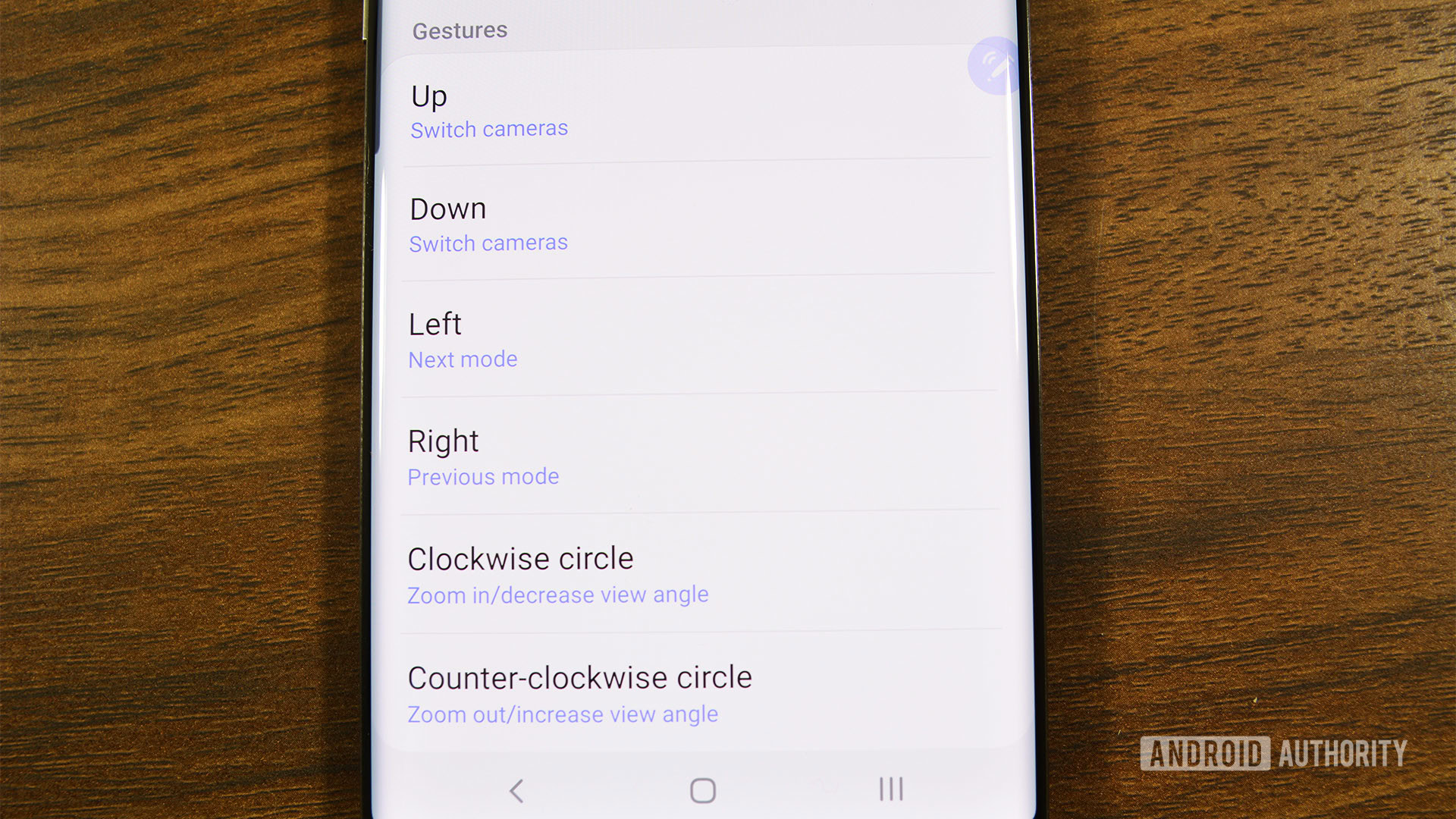
The Air Actions section in the Settings menu allows you to customize the gesture controls. Here’s how to do it:
- Navigate to Settings, scroll down to Advanced Features, then tap the S-Pen option followed the Air Actions option.
- The UI shows you every app on your device with support for the air gestures. Tap the icon of the app you want to customize.
- Scroll down to the Gestures section and configure the up, down, left, and right gestures along with the clockwise and counterclockwise gestures. You can also configure single tap and double tap of the S-Pen button.
- You can exit the menu once you finish and your changes will automatically save.
There are eight total spots for actions between the two S-Pen button press options and the six gesture control options. To be frank, most apps don’t have eight different assignable actions. Thus, you may end up doubling up or leaving some of the gesture control options blank.
Compatible apps
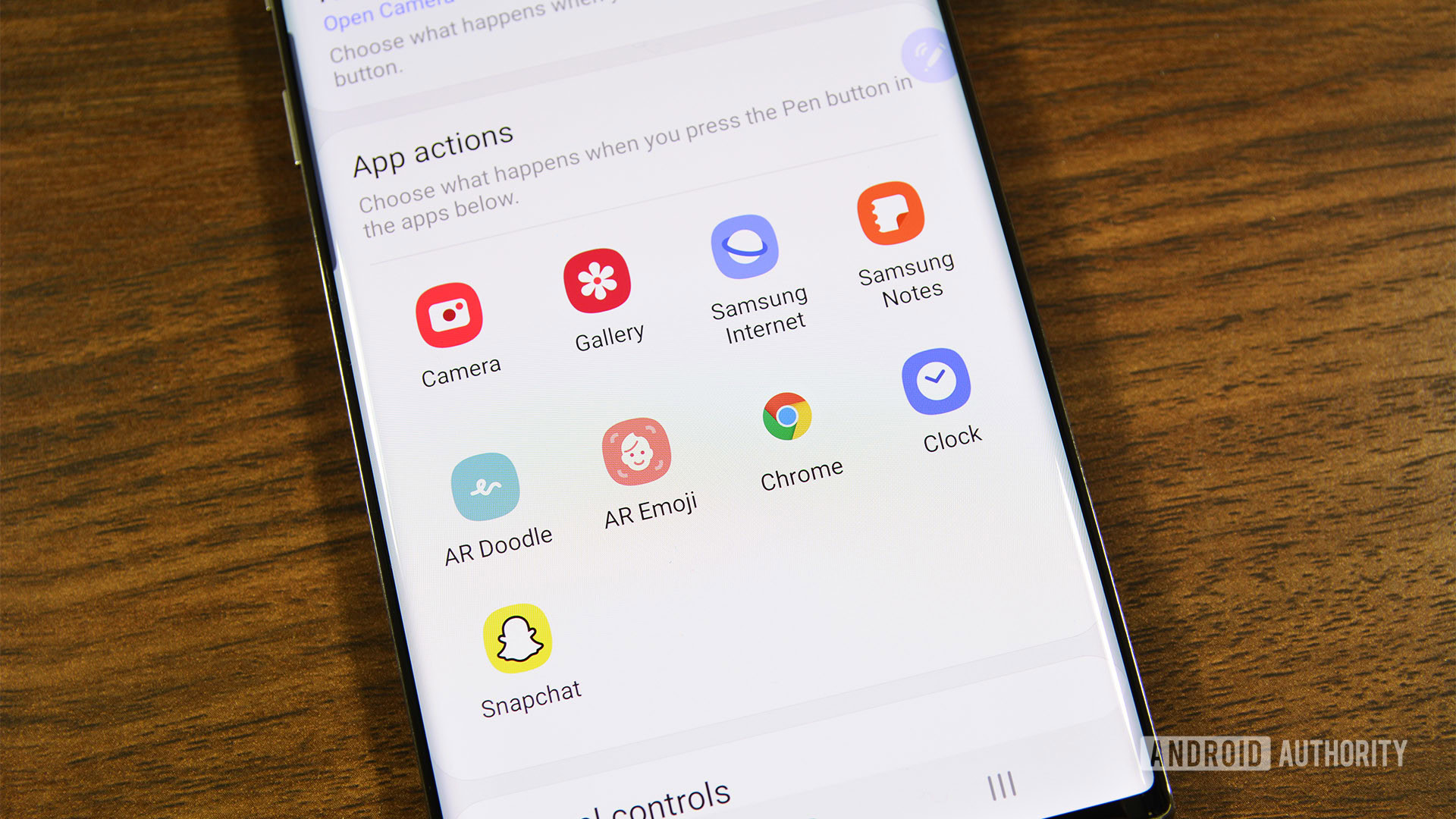
This is a complicated answer because there are actually two lists of compatible apps. The first are the ones you find in the Air Actions section of the Settings menu. They include apps like Samsung Camera or Google Chrome. Each app is listed in the Settings menu and can be individually configured.
The second set is basically every media player app on Google Play. Samsung has a set of universal Air Actions for all media apps. It worked with my podcast player, my music player, and YouTube with all of the same controls.
Almost all media player apps use a single, universal set of controls.
You can access the media player gesture controls in the same area of the Settings as the other compatible apps. It shows up at the bottom of the Air Actions section of the Settings under the General controls section with the Media label.
You can configure the gestures, single press, and double press actions like any other compatible app. However, any changes you make reflect in every media player app. Plus, media player apps don’t seem to have clockwise and counterclockwise gestures like natively compatible apps.
App support is limited to a handful of Samsung apps along with a few others. However, it should work with virtually any music, video, or podcast app.
There isn’t a full list of compatible apps available anywhere, although the India version of Samsung’s website lists a few. Short of trial and error, there is no way to list all of them. However, we do know that Netflix, YouTube, Snapchat, Google Chrome, Spotify, and a handful of Samsung apps work with the feature. Additionally, every media player app should also work with Air Actions.
How does it feel?
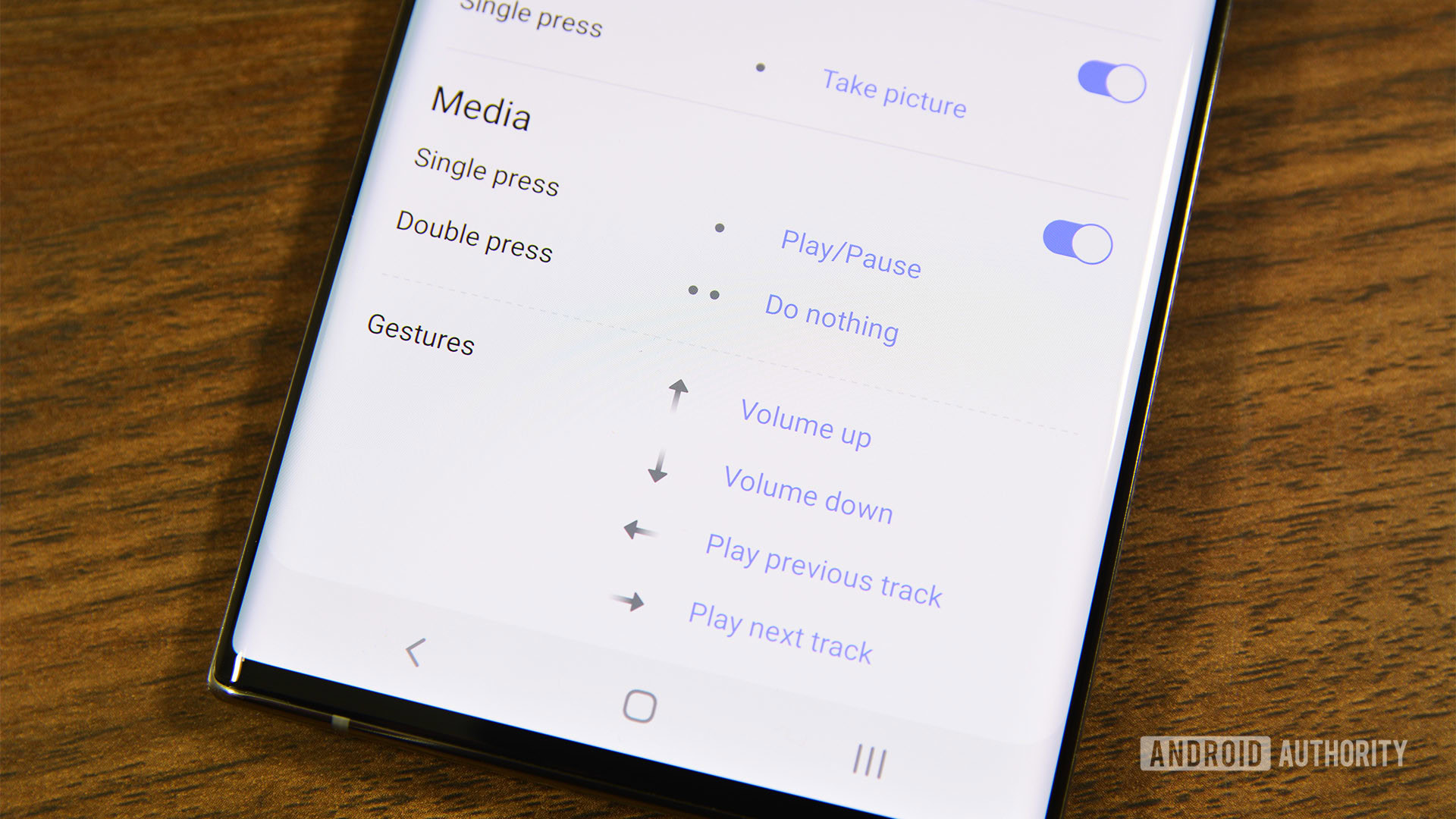
Samsung’s Air Actions are a little bit reminiscent of the LG G8’s hand gestures. It’s quite finicky at first until you get used to it and then it works rather well. Unlike the LG G8, these gestures don’t require you to have the S-Pen directly in front of the phone. Thus, you can use the gestures anywhere as long as the S-Pen is still wirelessly connected to the phone.
It definitely works consistently enough for the basic controls like switching the camera to selfie mode and then taking a picture. We also quite liked its ability to skip tracks in media players (forward and backward), pause media, and going to previous web pages when using Chrome. For simple, one-off tasks like that, the Air Actions feature really shines.
Air Action’s biggest flaw

We were able to identify only one major flaw that keeps this feature from being way more useful in its current form. The phone cannot do multiple gestures in a single go. In the cases where it does, it’s not immediately obvious on how to activate it and it’s rather clunky to use.
For example, media apps use swipe up and swipe down Air Actions to increase and decrease the volume. You can adjust the volume in multiple increments by swiping in the appropriate direction and holding it at the end of the gesture. It then picks up that you’re trying to make the adjustment more than once and slowly continues making adjustments on its own.
You can use a single gesture to adjust things like volume multiple times, but it feels inelegant and clunky.
The same story goes for the camera zoom, scrolling in Google Chrome, or any other activities with the capacity for a lot of repetition. The gesture itself moves things by one increment pauses for a moment, and then continues until you let go of the button. If you overshoot, you have to cancel the gesture and do the opposite gesture to right the ship again.
We’d like to see something a little more elegant here. For example, once the Note 10 sees that we’re adjusting the volume, it would be nice to be able to adjust both volume up and down without re-initializing the gesture each time. As it stands, you can adjust things multiple times in a single gesture, but only in one direction and very slowly. It’s still useful, but it could definitely be better.
Of course, we’d like to see the feature work with more apps and do other crazy things, but we probably won’t see anything like that until the Samsung Galaxy Note 11. Aside from its inability to properly deal with highly repetitive actions, we found the Air Actions feature to work smoothly and consistently after a brief learning period.
The Air Actions feature feels like the start of some really cool things for the S-Pen. However, this is only the second iteration of the S-Pen remote capabilities so we weren’t expecting anything too crazy this early in the development process. We certainly hope Samsung improves on this feature in the years to come. Tell us what you think in the comments!